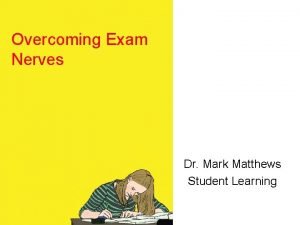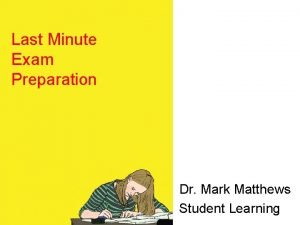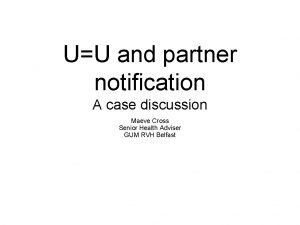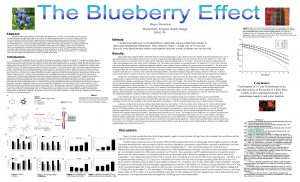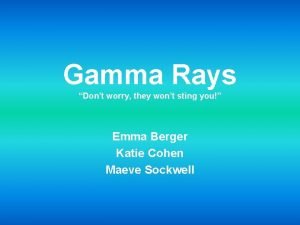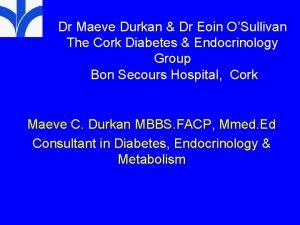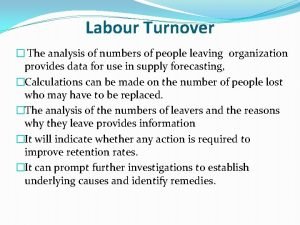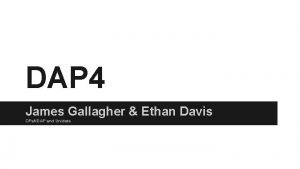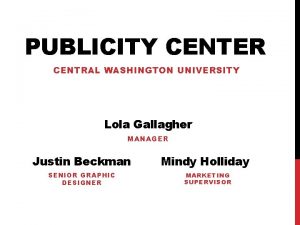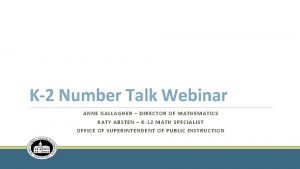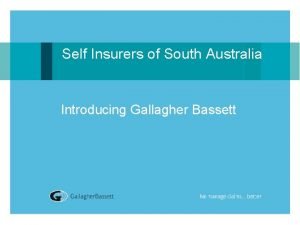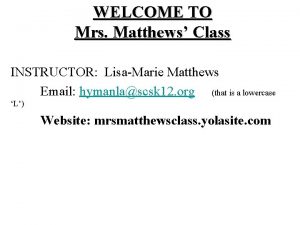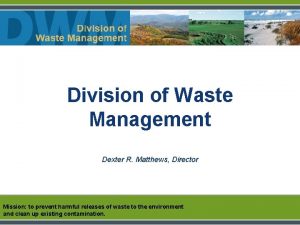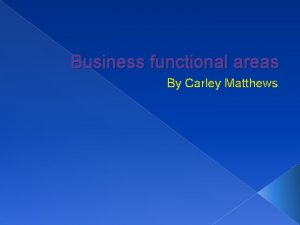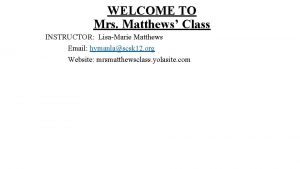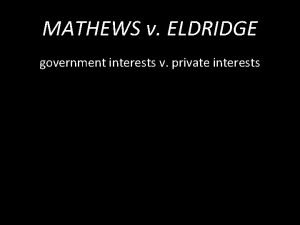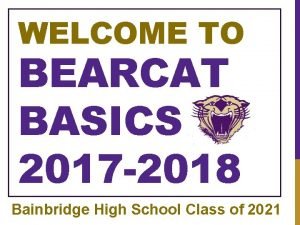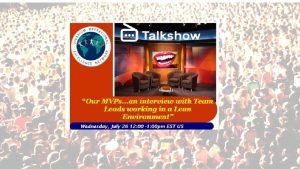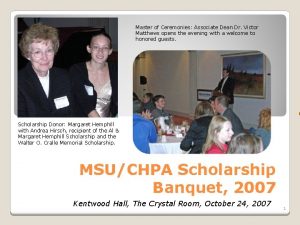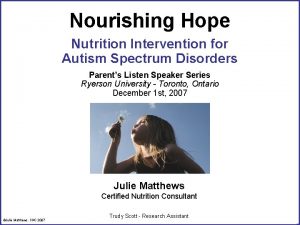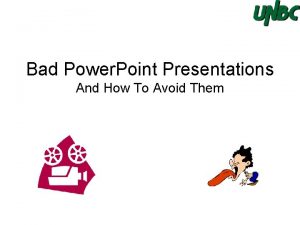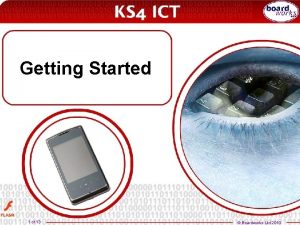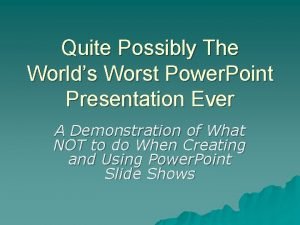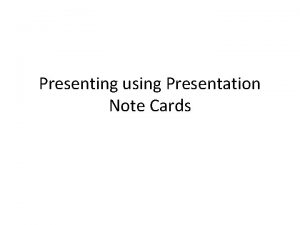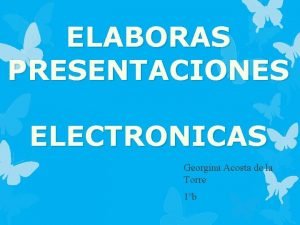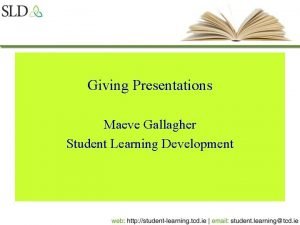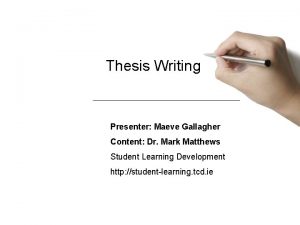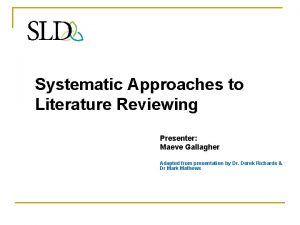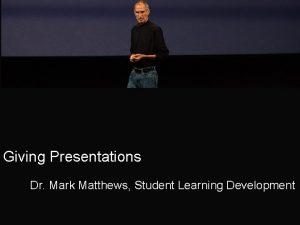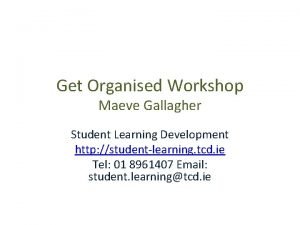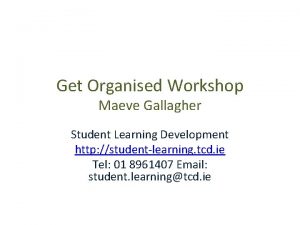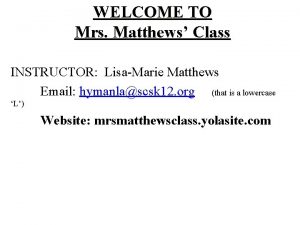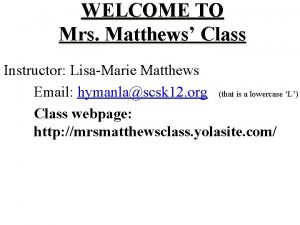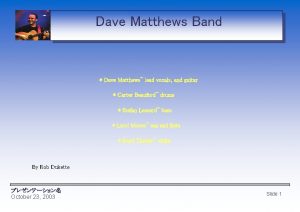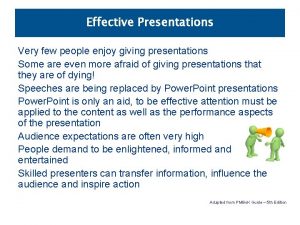Giving Presentations Presenter Maeve Gallagher Dr Mark Matthews

























































- Slides: 57

Giving Presentations Presenter: Maeve Gallagher Dr. Mark Matthews, Student Learning Development

“Presentation is the ‘Killer Skill’ we take into the real world. It’s almost an unfair advantage. ” Ethan Rasiel & Paul N. Friga, ‘The Mc. Kinsey Mind’

Your experience 1. What is your experience of giving presentations? 2. What do you like about it? 3. What do you dislike about it? 4. Will you need to present in the future?

Steps in Giving Presentation 1. Plan 2. Prepare 3. Practice 4. Present

1. Planning

Questions? • • • Who is your audience? Why are they there? What is your goal? How long will it be? Where will it take place?

Business Card Test

Intro 5 minutes Summary and wrap up 20 minutes Key message Conclusions 15 minutes Main points 10 minutes

3 things If your audience could remember only three things about your presentation, what would you want it to be? (1)_______ (2)_______ (3)_______

Start your Outline • • • No Powerpoint Film with no script Pencil & Paper Order your thoughts Key points

Structure Have a sound, clear structure

Create interest “We need to open gaps before we close them. Our tendency is to tell people the facts. First, though, they must realize that they need these facts. ” Dan & Chip Heath, Make it Stick

Structure Introduction Main theme Summary/ Conclusions Get Attention Content Key message

2. Preparation

Speaker’s 3 friends 1. Personal Notes 2. Visuals 3. Handouts

Some things to avoid….

• The evils of Powerpoint are familiar to everyone, they include: – – Too much text Too small to read and is really only serving as a crutch for the presenter Clip Art and Slide templates that have been seen a million times Spinning, wooshing, dazzlings animations Part of the problem with having so much text onscreen is that it puts of people. If the idea of your presentation is to read from the slides then we are you there? Besides people can read quicker than you can talk so they’ll have finished reading your slide and be waiting for the next one, or even worse working on a masterpience doodle. Your presentation, Powerpoint or otherwise, should be a supporting aid – you want main the focus on you not your presentation. Ideally, you should be able to deliver an equally interesting presentation should the projector/computer/room/audience break. Avoid too many bullets as well – it makes the information dull for the audience.

A few guidelines

10/ 20/ 30 rule “should have ten slides, last no more than twenty minutes, and contain no font smaller than thirty points. ” Guy Kawaski

Information 1. Most important information Jumps Out 2. Drip feed 3. Never use sentences

Colour Use colour well

High quality images Use images to support your point Use a consistent theme

Attending College “Overall, our findings provide a combined retention rate of 92. 40 % for students who attended TCD. This is very close to the previous year’s rate of 92. 45%. It should be noted that these results should be interpreted on a tentative basis as it is clear that a number of other outside factors impact on a student’s ability to sustain and progress in their chosen area of study at third level. ” n n n n 15, 000 students come to Trinity every year There are 3 Faculties Morgan 2001 A study of non-completion in undergraduate University courses The average non-completion rate across Irish Universities is 16. 8% Improve all students chances of achieving their maximum potential Connect with students – building relationships, departmental receptions 51% of college students leave college because of lack of effective supports




3. Practice

Fitness • Slow to develop • Quick to disappear The more you practice: • better you feel • more you want to do

Feeling Nervous? • • Lack of experience Lack of preparation Lack of enthusiasm Negative self-talk

Presenting Fitness Practice • Room • Everything • Technology

It’s not about you Focus on your goal • what you are going to say Audience • Make them comfortable • Interesting

Becoming Confident • • • Be over-prepared Rehearse and practice Know your subject Use relaxation techniques Be positive +++ Avoid stressors

4. Presenting

The most powerful visual aid • words • voice • body language

Turn yourself on ask questions talk beforehand more extroverted

Make a strong start

Show your passion


• Eye contact

Smile

Dealing with Questions 1. 2. 3. 4. Good questions. Difficult questions Unnecessary questions Irrelevant questions

Dealing with Questions TRACT technique 1. Thank the questioner 2. Repeat the question 3. Answer the question 4. Check with the questioner if they are satisfied 5. Thank them again

Practice Person A speak for 30 seconds about your work. Person B listen. At the end ask a question. Person A use TRACT to respond.

Just a Minute • Speak about subject for 1 minute • Lose 1 point for each ‘umm’ or ‘ahh’ • Pauses and repetition allowed

Feedback Handling Criticism • Consider criticism objectively • Give a clear and honest response

Giving Criticism Step 1: Listen to Criticism Step 2: Decide on Truth Step 3: Respond Assertively Passive Response Directly Aggressive Response Indirectly Aggressive Response

Poster Presentations Presentation Skills Dr. Mark Matthews, Student Learning Development http: //studentlearning. tcd. ie/

What are posters for? 1. 2. 3. 4. 5. Communicate research (concisely) Publicity Create a discussion Get feedback Meet colleagues

Common Structures Title Introduction Methods Results Discussion Conclusion References Title Introduction Data Collection Methods Findings Analysis Discussion References


Common Mistakes 1. 2. 3. 4. 5. Too much information Font size too small Poor use of images Titles with colons Poor Layout

Typical academic poster sizes A 0 118. 9 cm x 84. 1 cm A 1 84. 1 cm x 59. 4 cm A 2 59. 4 cm x 42. 0 cm A 3 42. 0 cm x 29. 7 cm Choose Portrait or Landscape orientation. Tip: To set the document size in Power. Point, choose File > Page Layout > Slide Size > Custom > [ insert the size you want ]. Remember: To print effectively, images should be high resolution (150 -300 dpi).

Final Checks Is my poster enticing? Does my eye know where to look? Have I made appropriate use of images? Are the fonts a good size? Have I used an appealing colour scheme? Print an A 4 test copy

Developing your Poster Scientific Powerpoint poster templates http: //www. makesigns. com/Sci. Posters_Templates. aspx


Steps in Giving Presentation 1. Plan 2. Prepare 3. Practice 4. Present

Student Learning Development Thank you for your time Visit our website at: http: //student-learning. tcd. ie
 Developing oral and online presentations
Developing oral and online presentations Dr. mark matthews
Dr. mark matthews Dr mark matthews
Dr mark matthews Maeve stevenson
Maeve stevenson Maeve hogan
Maeve hogan Maeve stevenson
Maeve stevenson Maeve sockwell
Maeve sockwell Colin milligan builders
Colin milligan builders Dr durkan
Dr durkan Maeve sherlock
Maeve sherlock Kelley gallagher
Kelley gallagher Deeper reading kelly gallagher
Deeper reading kelly gallagher Gallagher hr estimator
Gallagher hr estimator Kelly real world
Kelly real world [email protected]
[email protected] Non aaawwubbis sentences
Non aaawwubbis sentences Gallagher
Gallagher Lola gallagher
Lola gallagher K&j tire spring arbor
K&j tire spring arbor Gallagher law library
Gallagher law library Article of the week kelly gallagher
Article of the week kelly gallagher Bobby horan
Bobby horan Dr christine anne gallagher
Dr christine anne gallagher Colm gallagher
Colm gallagher Why doesn’t holden throw the snowball?
Why doesn’t holden throw the snowball? Gallagher bassett sa
Gallagher bassett sa Catcher in the rye target
Catcher in the rye target Matthews chapter 5
Matthews chapter 5 Mrs matthews website
Mrs matthews website Matthews motshwarateu
Matthews motshwarateu Matthews waste disposal
Matthews waste disposal Integral and non integral citation
Integral and non integral citation Carley matthews
Carley matthews 123 john street, matthews, nc 28822
123 john street, matthews, nc 28822 Matthews planck
Matthews planck øyou
øyou Emiko's cat often meows
Emiko's cat often meows Whats a static character
Whats a static character Dr eloise matthews
Dr eloise matthews Mandy matthews nhs england
Mandy matthews nhs england Anne matthews dcu
Anne matthews dcu Kent matthews
Kent matthews Matthew v. eldridge
Matthew v. eldridge Roy mathews bainbridge
Roy mathews bainbridge Donna matthews jarrell
Donna matthews jarrell Dr victor matthews
Dr victor matthews Mandy matthews nhs england
Mandy matthews nhs england Nourishing hope for autism
Nourishing hope for autism Survey monkey accessibility
Survey monkey accessibility Bad powerpoint presentations examples
Bad powerpoint presentations examples Roof ppt presentations
Roof ppt presentations Powerpoint add in efficient elements
Powerpoint add in efficient elements Boardworks presentations
Boardworks presentations World's worst presentation
World's worst presentation Titles for mental health presentations
Titles for mental health presentations Robot sensors ppt
Robot sensors ppt Note card presentation
Note card presentation Areas donde se utilizan las presentaciones electronicas
Areas donde se utilizan las presentaciones electronicas

